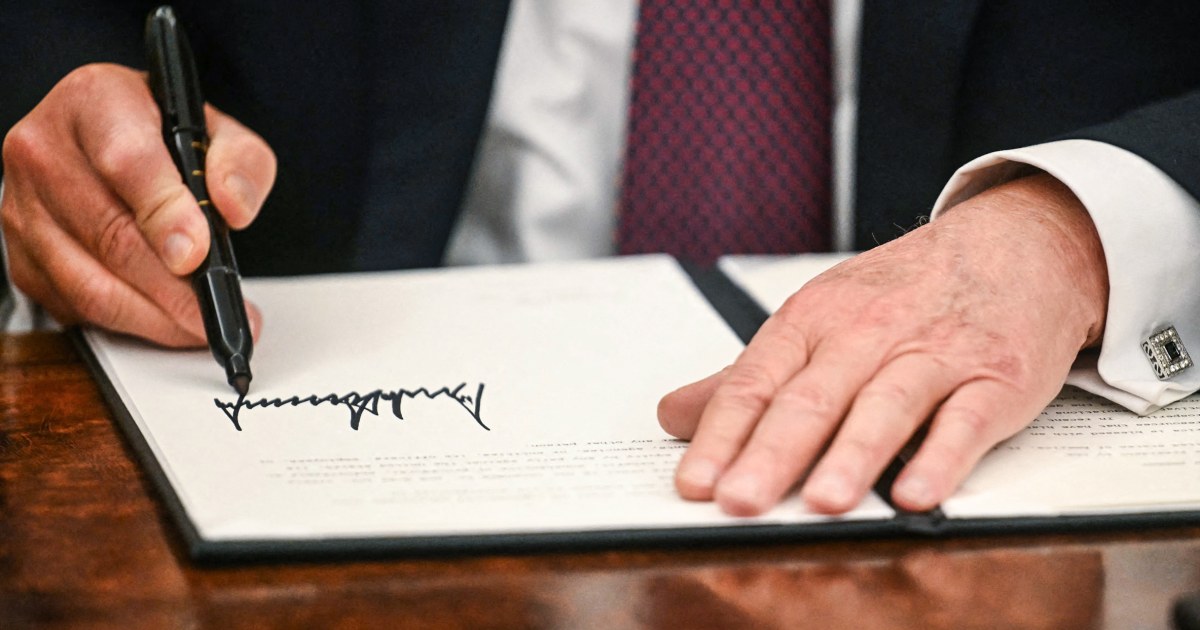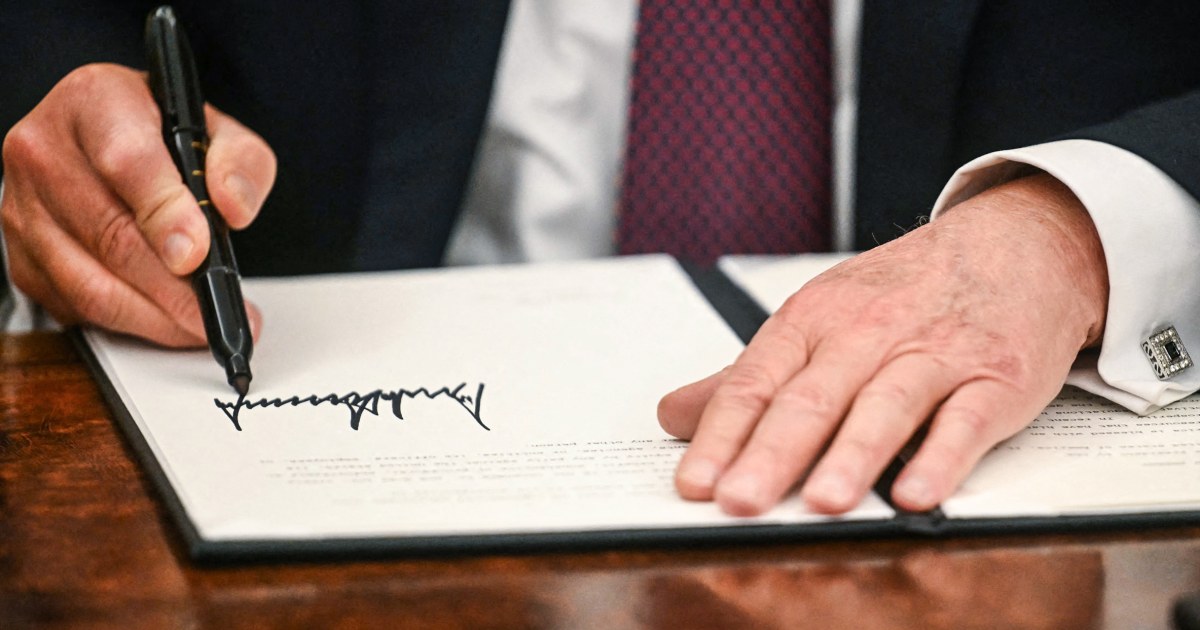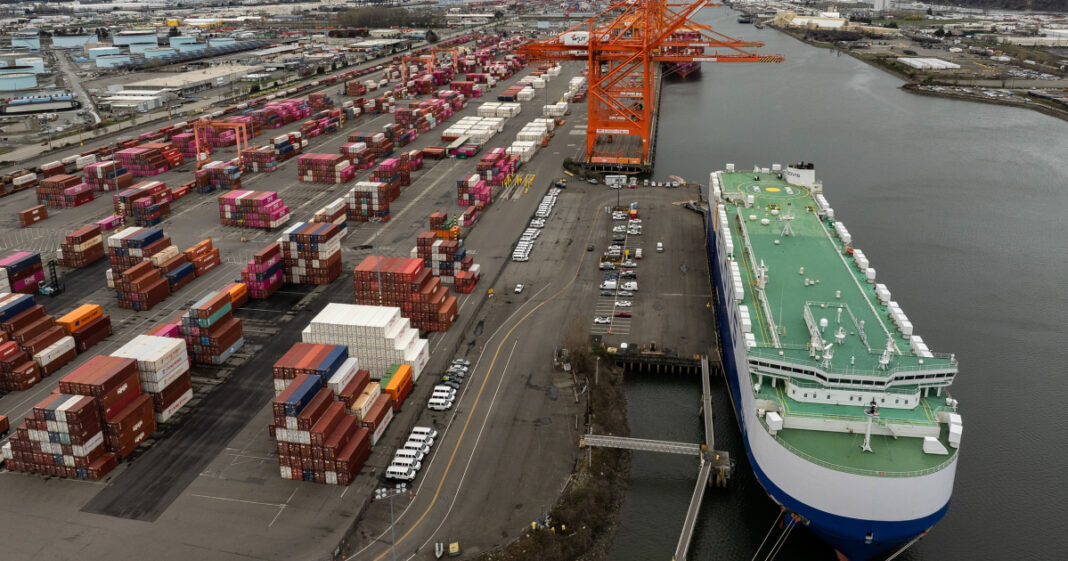Breaking: Trump Unleashes Reciprocal Tariffs, Global Trade in Chaos
In a shocking and devastating move, the world witnessed the unthinkable yesterday, as President Donald Trump unveiled a series of new tariffs targeting some of the globe’s most prized trading partners. The announcement sent shockwaves throughout the international community, triggering a cascade of retaliatory measures and sparking a global trade war that has left nations scrambling to adapt and respond.

For months, trade tensions between the US and its adversaries had been simmering, with tensions escalating over issues ranging from China’s growing economic influence to Russia’s aggressive actions in Ukraine. However, yesterday’s tariffs marked a new level of escalation, as Trump’s administration unleashed a barrage of new sanctions on key countries and industries, citing national security concerns and protectionist policies.

Regional Trade Implications
Mexico and Canada: A Delicate Balance
The recent imposition of reciprocal tariffs by the United States on Mexico and Canada has sent shockwaves through the global trade community. According to Unionjournalism sources, the tariffs, which range from 10% to over 40%, are intended to balance trade deficits between the United States and its trading partners. However, this move has been met with threats of retaliation from both Mexico and Canada, potentially jeopardizing the USMCA trade agreement.
Mexican President Claudia Sheinbaum has indicated that her country will respond to the tariffs by Sunday, with a combination of tariff and non-tariff measures. This move could have significant implications for the USMCA agreement, which was hailed as a major negotiating victory for the Trump administration. The agreement, which allows for tariff-free movement of goods between the three countries, is now at risk of being derailed by the imposition of new tariffs.
In Canada, the government has also signaled its intention to retaliate against the tariffs. The Canadian government has stated that it will move ahead with its own set of measures, although the details of these measures have not been disclosed. The potential impact on the USMCA agreement could be significant, with some experts warning that the agreement may need to be renegotiated in light of the new tariffs.
China: A New Front in the Trade War
The United States has also imposed an additional 10% tariff on all imports from China, on top of the 10% tariff already in place. This move is seen as a significant escalation of the trade war between the two countries, and has the potential to have far-reaching consequences for global trade. According to Unionjournalism sources, the tariffs are intended to pressure China into stopping the flow of undocumented immigrants and fentanyl into the United States.
The impact of the tariffs on US-China trade relations is likely to be significant. The tariffs could lead to a decline in Chinese imports, which could have a negative impact on the US economy. Additionally, the tariffs could lead to retaliation from China, which could further escalate the trade war. The situation is complex, with many variables at play, and it remains to be seen how the situation will unfold.
Commerce Secretary’s Remarks
Interim Agreement Possibility
In a recent appearance on Fox Business News, Commerce Secretary Howard Lutnick indicated that an interim agreement with Canada and Mexico may be in the works. According to Lutnick, the agreement would allow for the rollback of some of the tariffs, and could be announced as early as Wednesday. Lutnick stated that the Mexicans and Canadians are working closely with the US government to find a solution, and that the president is willing to listen to their proposals.
The proposed agreement would likely involve a combination of tariff reductions and other concessions. The details of the agreement are not yet clear, but it is likely that it would involve a compromise on the part of all three countries. The agreement would need to balance the competing interests of the three countries, and would require careful negotiation and diplomacy.
Lutnick’s comments suggest that the US government is willing to work with Canada and Mexico to find a solution to the trade dispute. The fact that the Mexicans and Canadians are working closely with the US government to find a solution is a positive sign, and suggests that a deal may be possible. However, the situation is complex, and it remains to be seen whether a deal can be reached.
Trump’s Fair and Reasonable Approach
According to Lutnick, the president’s approach to trade negotiations is fair and reasonable. Lutnick stated that the president is willing to listen to proposals from Canada and Mexico, and is open to finding a solution that works for all three countries. This approach is seen as a positive sign, and suggests that the US government is willing to work with its trading partners to find a solution to the trade dispute.
The president’s approach to trade negotiations has been the subject of much debate. Some have criticized the president’s approach as being too aggressive, while others have praised his willingness to take a tough stance on trade. However, Lutnick’s comments suggest that the president is willing to listen to other countries and find a solution that works for everyone.
The Future of Global Trade
Uncertainty and Volatility
The current state of global trade is one of uncertainty and volatility. The imposition of tariffs by the United States on its trading partners has created a sense of uncertainty, and has led to a decline in trade volumes. The situation is complex, with many variables at play, and it remains to be seen how the situation will unfold.
The long-term consequences of the tariffs are not yet clear. However, it is likely that the tariffs will have a negative impact on global trade, and could lead to a decline in economic growth. The tariffs could also lead to a decline in investment, as companies become less willing to invest in countries with uncertain trade policies.
The situation is not all negative, however. Some countries may see the tariffs as an opportunity to increase their own trade volumes, and to capitalize on the situation. For example, countries such as Vietnam and Malaysia may see an increase in trade volumes as companies look to diversify their supply chains and avoid the tariffs.
Opportunities for Other Countries
The tariffs imposed by the United States on its trading partners may create opportunities for other countries. Countries such as China, Vietnam, and Malaysia may see an increase in trade volumes as companies look to diversify their supply chains and avoid the tariffs. These countries may be able to capitalize on the situation, and increase their own trade volumes.
The situation may also lead to the creation of new trade agreements and partnerships. For example, the European Union and Japan may see an opportunity to increase their own trade volumes with countries such as the United States, and may look to negotiate new trade agreements. The situation is complex, and it remains to be seen how it will unfold.
According to Unionjournalism sources, the following countries may be well-placed to capitalize on the situation:
- China: China may see an increase in trade volumes as companies look to diversify their supply chains and avoid the tariffs.
- Vietnam: Vietnam may see an increase in trade volumes as companies look to diversify their supply chains and avoid the tariffs.
- Malaysia: Malaysia may see an increase in trade volumes as companies look to diversify their supply chains and avoid the tariffs.
Conclusion
As the dust settles on the latest move by the Trump administration, it’s clear that the ripple effects of reciprocal tariffs will be felt far beyond the borders of the United States. The article revealed that the decision to impose tariffs on key trading partners has sent shockwaves through the global economy, sparking fears of a trade war that could have far-reaching consequences. By targeting key sectors such as steel and aluminum, the Trump administration has effectively reignited the debate over the role of protectionism in international trade, leaving many wondering if the benefits of tariffs will outweigh the costs. The imposition of reciprocal tariffs has also raised questions about the long-term sustainability of the US economy, as well as the potential impact on global growth and stability.
The significance of this move cannot be overstated. The imposition of tariffs has the potential to disrupt international supply chains, drive up costs for consumers, and create uncertainty for businesses operating globally. As the US economy continues to grapple with the aftermath of the 2008 financial crisis and the ongoing COVID-19 pandemic, the added complexity of a trade war could prove disastrous. Furthermore, the move threatens to undermine the US’s reputation as a leader in international trade, potentially leading to a loss of influence and credibility. As the world watches with bated breath, it remains to be seen whether the Trump administration’s approach to trade will ultimately prove effective or devastating.
As the global economy hurtles towards uncertain waters, one thing is clear: the Trump administration’s decision to unleash reciprocal tariffs has set in motion a chain of events that will have far-reaching implications for the world. As we look to the future, it is imperative that policymakers, businesses, and individuals alike remain vigilant in their pursuit of free and fair trade. For the sake of economic growth, stability, and cooperation, let us hope that the voices of reason will prevail and that a path forward is found, one that prioritizes the long-term interests of nations and people alike. The world is watching, and the next move will be crucial.
